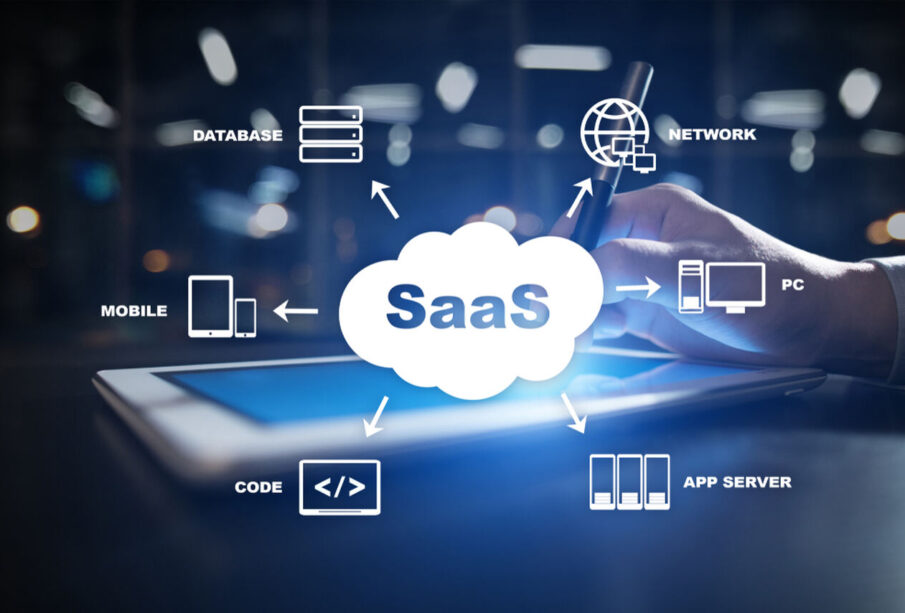Crossing Borders, Navigating Laws: Legal Risk Management for SaaS Companies in Global Markets

Introduction: The Global SaaS Opportunity—and Its Legal Complexities
The rise of Software-as-a-Service (SaaS) has revolutionized the way technology is consumed, enabling startups and enterprises alike to scale rapidly across borders. With cloud-native infrastructure and subscription-based models, SaaS companies can serve international markets without establishing physical presence—offering unprecedented flexibility and reach. Yet this agility comes with a caveat: cross-border legal exposure.
From data sovereignty issues to jurisdictional disputes and local compliance mandates, operating a SaaS business globally requires more than just engineering prowess. It demands a sophisticated understanding of legal risks—and an even more strategic approach to mitigating them. This article explores the primary cross-border legal challenges SaaS providers face in 2025 and offers a clear roadmap for safeguarding operations.
Understanding the Legal Terrain: What Makes SaaS Risky Across Borders?
At its core, a SaaS product is intangible and globally accessible. But its operations often intersect with diverse legal regimes governing data, taxation, consumer protection, intellectual property, and more. Legal risks arise when these jurisdictions clash—or when companies fail to comply with region-specific regulations.
Primary Legal Risks for SaaS Businesses Operating Internationally:
-
Data Privacy and Sovereignty Laws
-
Jurisdictional and Contract Enforcement Issues
-
Cross-Border Taxation and VAT/GST Obligations
-
Local Consumer Protection and E-commerce Laws
-
Export Controls and Sanction Restrictions
-
Intellectual Property Protection Across Regions
Each risk vector carries financial, operational, and reputational consequences, especially when navigating the legal nuances of unfamiliar markets.
Key Cross-Border Legal Risks—and How to Mitigate Them
1. Data Privacy and Localization Requirements
Perhaps the most high-stakes legal challenge facing SaaS businesses today, data privacy rules vary dramatically across jurisdictions. Countries like Germany, India, China, and Brazil now require that certain categories of data—especially personal or sensitive data—be stored or processed within their borders.
Mitigation Strategies:
-
Adopt a Region-by-Region Compliance Framework
Tailor your privacy program to major regulatory regimes such as GDPR (EU), CCPA/CPRA (California), LGPD (Brazil), and India’s DPDP Act. -
Implement Data Residency Options
Provide regional data hosting capabilities to meet localization demands, particularly in countries with strict sovereignty laws. -
Maintain a Dynamic Privacy Policy
Ensure your privacy policies are transparent, multilingual, and continuously updated based on evolving regulations. -
Use Binding Corporate Rules (BCRs) or Standard Contractual Clauses (SCCs)
For cross-border transfers, these mechanisms offer a legal basis for compliance under EU and similar laws.
2. Jurisdiction and Dispute Resolution
When operating across borders, the question of which country’s laws apply and where disputes can be resolved becomes legally sensitive. A customer in Singapore may have very different legal protections than a customer in France or Canada.
Mitigation Strategies:
-
Specify Governing Law and Jurisdiction in Contracts
Clearly state which legal system will govern disputes and where proceedings will take place—ideally one favorable to your legal position. -
Leverage Arbitration Clauses
International arbitration is often more neutral and enforceable than court rulings in foreign jurisdictions. -
Use Local Legal Advisors
Engage regional counsel to review and localize your contracts to minimize risks and improve enforceability.
3. Taxation, VAT, and Indirect Tax Compliance
Tax authorities around the world are catching up with digital commerce. SaaS businesses may be required to register for and collect VAT, GST, or sales tax in countries where they have customers—even without a physical presence.
Mitigation Strategies:
-
Track Tax Nexus and Registration Thresholds
Monitor where you exceed thresholds that trigger tax registration obligations (e.g., €10,000 in EU-wide sales). -
Implement Automated Tax Calculations
Use tax engines like Avalara or TaxJar to apply appropriate rates and generate compliant invoices. -
Keep Detailed Transactional Records
Audit trails for sales, refunds, and tax collected are essential for regulatory audits. -
Consult International Tax Experts
Especially as rules change rapidly, specialized tax counsel is essential for cross-border operations.
4. Consumer Protection and Terms of Use
Consumer rights vary widely, and in many jurisdictions, SaaS contracts may be scrutinized for fairness, clarity, and enforceability—especially in B2C or small business contexts.
Mitigation Strategies:
-
Localize Your Terms of Service
Draft region-specific terms that comply with local consumer protection laws and language standards. -
Avoid Unenforceable Clauses
Automatic renewals, disclaimers of liability, or limitation of remedies must be carefully drafted to survive legal scrutiny in countries like Germany or Australia. -
Provide Transparent Disclosures
Ensure users are informed of pricing, subscription terms, cancellation rights, and support obligations up front.
5. Export Controls and Sanctions Compliance
SaaS platforms dealing with encryption, AI, or cybersecurity tools may fall under export control regulations. U.S. companies, in particular, must navigate complex restrictions enforced by the Department of Commerce, OFAC, and others.
Mitigation Strategies:
-
Screen Users and Entities
Use KYC and watchlist screening to avoid servicing sanctioned countries or restricted users. -
Check Export Control Classification Numbers (ECCNs)
Determine if your software is subject to export control laws and if you need licenses. -
Monitor International Policy Changes
Keep abreast of changing sanctions and export laws that could affect access to certain markets or users.
6. Intellectual Property Protection
As a SaaS provider, your most valuable asset is often your codebase or proprietary algorithm. But IP protections are jurisdiction-specific, and enforcement can be especially difficult in certain countries.
Mitigation Strategies:
-
Register Trademarks and Copyrights in Key Markets
Especially in regions with high piracy or IP theft risks, proactive registration is essential. -
Use Licensing Agreements
Clearly delineate how your software can be used, modified, or redistributed. -
Encrypt and Obfuscate Source Code
For web-based apps, protect IP at the technical level to deter unauthorized access or cloning.
Cross-Border SaaS Compliance Checklist
-
✅ Maintain jurisdiction-specific privacy documentation
-
✅ Localize T&Cs, contracts, and policies
-
✅ Monitor and collect taxes in every required region
-
✅ Conduct export and sanctions due diligence
-
✅ Protect IP through technical and legal safeguards
-
✅ Review all compliance efforts at least quarterly
Conclusion: Legal Foresight Enables Global Growth
Expanding a SaaS business internationally is not without its legal hazards—but with careful foresight, the risks can be managed effectively. Cross-border compliance is no longer just a legal formality; it is a critical enabler of trust, scalability, and long-term sustainability.
SaaS leaders must partner with legal experts, invest in scalable compliance systems, and build a global operational mindset. Those who succeed in navigating this legal labyrinth will not only mitigate exposure but also unlock the full potential of international growth. In 2025, legal fluency is not optional for SaaS companies—it is strategic currency.













